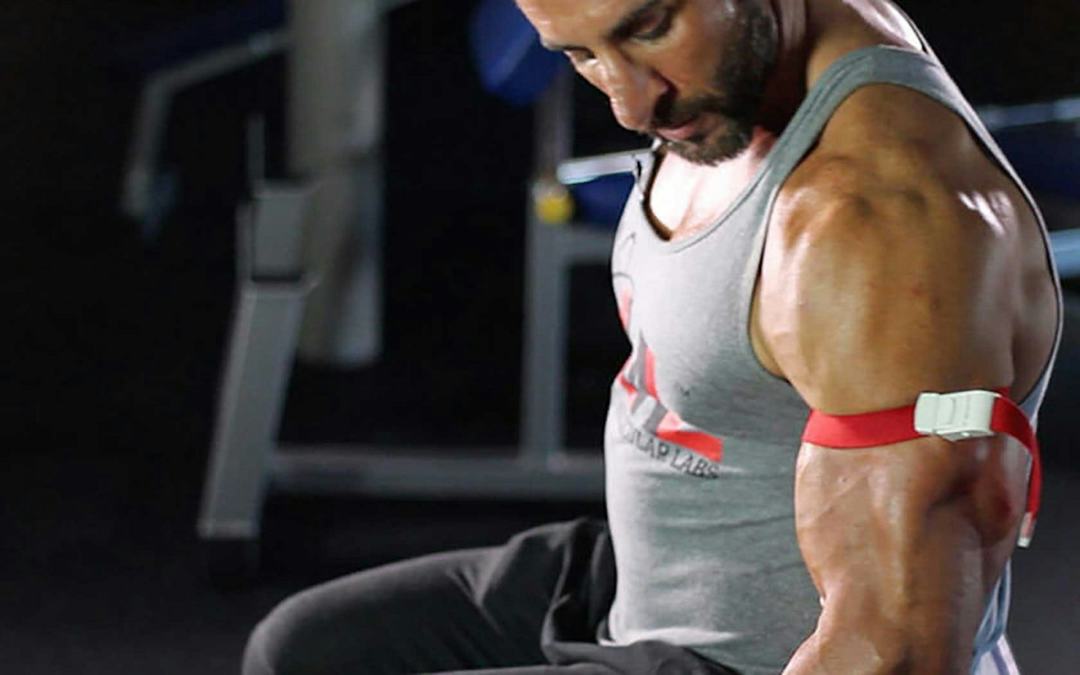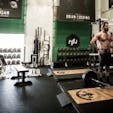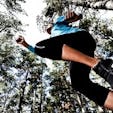Getting tied up isn’t just for the bedroom anymore. Binding your limbs to reduce blood flow can help you build muscle and come back from injuries—and as you get older, it may be the best method for stimulating muscle gains without risking joint stress. Called occlusion training—or, blood-flow restriction (BFR) training—it’s one of the hottest trends in both strength and conditioning and physical therapy. Here’s your guide on how to do it safely and with the best results.
What Is Occlusion Training?
Blood-flow restriction entails wrapping a cuff around either the upper arms or thighs to reduce the amount of blood that can enter the muscles and leave them. This results in a monstrous muscle “pump.” Though originally developed in rehab settings, it’s become popular among bodybuilders and recreational lifters, who typically apply an elastic knee wrap (the kind competitive lifters use to support their knees on heavy lifts). BFR is also referred to as KAATSU training.
How Tight Should I Make The Wraps?
First, decide which area of the body you’re going to train—you don’t want to occlude both the upper and lower body simultaneously. Two wraps should be applied to either the upper arms (just below the shoulders) or the upper thighs (just below the crease of the hips). Tighten them so they’re snug but not to the point where you feel pins and needles or your limbs turn blue. Research on healthy people with resistance-training experience—including a 2014 study in Clinical Physiology and Functional Imaging—has found that tightening the wraps to a perceived level of seven out of 10 (with 10 being the tightest possible) delivers the proper (and safe) amount of occlusion.
You can pick up wraps at elitefts.net for about $30. Specially-designed BFR cuffs and belts, along with pumps that tighten them, are also available. Strength coach Joe DeFranco has acknowledged using those made by (B) Strong (gobstrong.com) when training WWE Superstar Triple H. But at $265, the rig is expensive.
Occlusion Training Workouts
Blood-flow restriction has been shown to work best on basic exercises like the squat, bench press, leg press, leg extension, leg curl, and biceps curl. The general prescription for occlusion training is to choose a very light weight—20–30% of the load you think you could lift one time (your one-rep max). Of course, you won’t know your one-rep max for every exercise, so just estimate it conservatively and adjust as needed.
According to Jeremy Loenneke, Ph.D., an assistant professor of exercise science at the University of Mississippi, one of the world’s top BFR researchers, and a competitive bodybuilder, you should do your first set with 30 repetitions. Rest 30 seconds, and then perform another 3 sets of 15 reps with 30 seconds’ rest between each. This is your goal protocol, but it’s OK if you come up a little short. “It will not be uncommon for many to not be able to get all of the repetitions prescribed,” says Loenneke. However, if you can’t get near 30 reps on the first set or 15 on the subsequent ones, the wraps are either too tight or the weight is too heavy. “This strategy has routinely been shown to produce favorable changes in muscle size and strength,” says Loenneke.
Strength coaches have experimented with occlusion training with other protocols too. Joe DeFranco offers the following two routines from his private membership training site, the defrancoinsider.com. He recommends (B) Strong cuffs to use them with. You can use them as workouts on their own, or tack them on to the end of the upper- or lower-body sessions you’re already doing.
– Occlusion Training For Arms
1. Dumbbell Curl
Sets: 3 Reps: 30 (or until form breaks down) Rest: 20–30 sec.
After all sets are complete, rest 60 seconds with the wraps still on. Then train triceps as follows.
2. Triceps Pushdown
Sets: 3 Reps: 30 (or until form breaks down) Rest: 20–30 sec.
The entire protocol should take no more than 10 minutes.
– Occlusion Training For Legs
1. Body-Weight Squat
Sets: 4 Reps: 30, 15, 15, 15 Rest: 30 sec.
2. Lunge
Sets: 3 Reps: 10–20 (each leg) Rest: 30 sec.
3A. Standing Calf Raise
Sets: 2 Reps: 20 Rest: 30 sec.
3B. Plank
Sets: 2 Reps: Hold 30 sec. Rest: 30 sec.
Perform exercises 3A and 3B in alternating fashion (do a set of A, rest, then a set of B, and repeat). The entire protocol should not take longer than 15 minutes. Even if you aren’t finished, do not wear the wraps longer than 15 minutes.
How Does Occlusion Training Work?
Scientists aren’t completely sure how BFR works, but they know it does. Restricting blood flow into and out of the target muscles results in a big pump—called “cell swelling” in scientific literature—which is associated with muscle gain. Loenneke suspects that the swelling combined with the buildup of metabolites (called metabolic stress) may activate more muscle fiber at low intensities—i.e., when you use light weights.
A 2016 Sports Medicine review of 19 studies found that occlusion training increased muscle size and strength in the shoulders, chest, and arms better than conventional training when done with the same volume. But the real beauty of BFR lies in Loenneke’s point—that BFR helps maximize the effect of lifting lighter weights, which may allow you to gain muscle and strength without the risk and long-term wear and tear that heavy training imposes.
What is Occlusion Therapy?
BFR started in Japan as a means of rehabbing injuries (called KAATSU training). Since then, it’s caught on in America and was famously used by Olympic skiing medalist Bode Miller to recover from a back injury. We won’t go so far as to prescribe it as a treatment, but research has shown that it can speed healing. This year, the British Journal of Sports Medicine concluded that, compared to lifting light weights alone, “low-load BFR training is more effective, tolerable and therefore a potential clinical rehabilitation tool.”
Furthermore, a 2017 article from the newsletter of the American Orthopaedic Society for Sports Medicine states that BFR training may help accelerate muscle function after surgery, particularly after operations on the knees. However, more research is needed.
Is Occlusion Training Safe?
The thought of tying up your muscles and lifting till they burn has to make even the most ardent and experimental muscle-seeker cringe a little. But BFR has been shown to be safe (when done as directed). BFR sets are short, so your blood supply is only restricted for a few minutes (DeFranco says to cap it at 15)—it won’t make your arms fall asleep. However, if you have any kind of vascular disorder, don’t experiment with BFR. And if you start to experience real pain or numbness during your sets, stop immediately. “The overall safety profile of this type of exercise appears favorable for most people,” says Loenneke.




)






